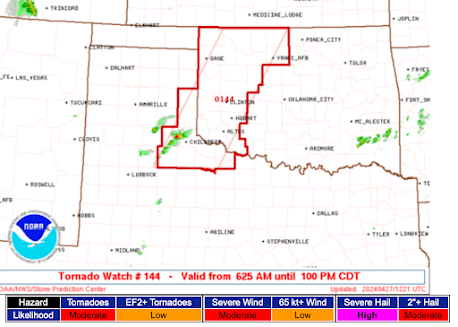A Back of the Envelope Guess As to How Many Lives Were Saved Tuesday by Kansas' Tornado Warnings
This was late Monday evening in Dayton, Ohio.
In darkness, a rare (~1% of all tornadoes), violent EF-4 tornado was approaching densely populated Dayton. Yet, numerous people were calling the station to complain about missing The Bachelorette. Finally, a television meteorologist gave them a piece of his mind.
With the excellent warnings (I was live-tweeting and watching the Dayton TV coverage), the death toll was zero.
Fast forward about 19 hours...
You'll recall that I wrote a book about the failure of the warning system during the Joplin Tornado .. a storm that killed 161 people. There were many similarities in the Joplin Tornado and Tuesday's Northeast Kansas Tornado.
So, thank you to the National Weather Service, television and radio meteorologists and meteorologists employed by commercial weather companies.
It has cut the death rates from tornadoes by more than 95%. So, please drop your nearest meteorologist a thank you note and stop complaining when they interrupt your program on television.
Note to Congress and the Trump Administration: The tornado warning system is a jewel that should only be strengthened and never tampered with. About 15-20 gap-filler radars would be an excellent start.
In darkness, a rare (~1% of all tornadoes), violent EF-4 tornado was approaching densely populated Dayton. Yet, numerous people were calling the station to complain about missing The Bachelorette. Finally, a television meteorologist gave them a piece of his mind.
With the excellent warnings (I was live-tweeting and watching the Dayton TV coverage), the death toll was zero.
Fast forward about 19 hours...
You'll recall that I wrote a book about the failure of the warning system during the Joplin Tornado .. a storm that killed 161 people. There were many similarities in the Joplin Tornado and Tuesday's Northeast Kansas Tornado.
- Both were 1-mile wide at times.
- Both were rain-wrapped and their approach could not be seen.
- Both were in May (5 calendar days apart) about the same time of day.
- Both originated in Kansas.
But, there is one huge difference: The warning system failed in Joplin while it worked beautifully (as far as I know) in northeast Kansas. The NWS issued great warnings and the broadcast meteorologists in Topeka and Kansas City emphasized that the tornado was rain-wrapped and invisible and to not even attempt to go outside and try to see it and instead to take cover. Excellent advice!
According to NIST, 7,500 residences were affected by the Joplin Tornado. According to Dr. Stephen Strader, an expert in the field, 71,000 21,000 residences were potentially affected by the Kansas
tornado. It is number, but too soon to know the exactI am sure it is considerably smaller. Since the number of potential residents affected by the Kansas storm was 10 times the Joplin (JLN) number, for this "back of the envelope" purpose, let's call them about the same. New: Actually, even with 21,000, it is still considerably more than Joplin although I think the 21,000 will end up much higher than the actual number.
The JLN Tornado was rated by the NWS as EF-5. However, NIST's detailed engineering study rated it an EF-4. The Kansas Tornado is rated EF-4. I believe the Joplin storm was the stronger of the two but they were in the same general intensity ballpark and they were about the same size.
Here is how I see things: There were zero deaths in the (nighttime, extremely dangerous) Dayton storm. There were zero deaths in the Kansas storm. There were 161 in Joplin. Now, that is not an apples-to-apples comparison. The Joplin Tornado was stronger and likely will have affected more people (more apartments in an urban area) and businesses than either of Monday's and Tuesday's storms when the final numbers are in.
But, that said, what can account for 161 deaths versus zero? In my opinion, it was the warning system's success in Dayton and Kansas and its failure in Joplin.
A emergency management friend called me right after the JLN tornado and told me that their GIS-program used to estimate deaths (so as to size the immediate response) predicted about 35-40 deaths in Joplin. To be very conservative, let's take that number up to 60. That would point to about 100 Joplin deaths caused by the failure of the warning system.
While there is always an element of good fortune with zero deaths in an EF-4, we might be able to characterize it this way: Absent any warning whatsoever, up to 100 people might have been killed by Tuesday's tornado. While these are extremely tentative numbers, there are dozens, if not 100, Kansans walking the earth today because of weather science. Yes, their homes or businesses may have been destroyed. But, the are alive!
And, there is one group that overwhelming deserves their thanks: weather science.
So, thank you to the National Weather Service, television and radio meteorologists and meteorologists employed by commercial weather companies.
It has cut the death rates from tornadoes by more than 95%. So, please drop your nearest meteorologist a thank you note and stop complaining when they interrupt your program on television.
Note to Congress and the Trump Administration: The tornado warning system is a jewel that should only be strengthened and never tampered with. About 15-20 gap-filler radars would be an excellent start.







Comments
Post a Comment